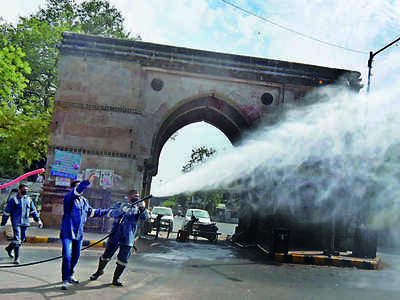
Loud, colourful and cheerful – that’s Ahmedabad for you on a normal day. But when Covid struck, the city’s 600-year-old heart went into a three-month-long freeze.
In April, all eyes were on the city’s west. The administration expected the virus to touch down there as people returned from abroad. While the first case was found there, the outbreak really started in the old Walled City. Jamalpur saw a surge. An 85-year-old woman who had returned from Saudi Arabia died of Covid at Panch Pipli in the Khamasa neighbourhood.
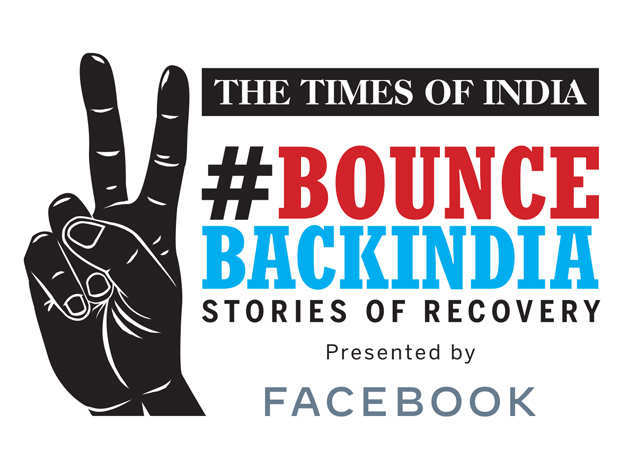
Jamalpur and the other old parts, such as Kalupur, Dariapur, Shahpur, Khadia and Karanj, comprise only 5% of Ahmedabad’s area and population but make up its cultural and commercial centre. They also have centuries-old wholesale markets. For these reasons, Unesco declared the area a World Heritage City in July 2017.
Read more from this series
By mid-April, three out of every four Covid cases were being reported from the Walled City and Danilimda. Imran Khedawala, MLA from Jamalpur-Khadia, was among the sick.
Alarmed, the government ordered a freeze. Only women were allowed out for two hours in the afternoon to shop for essentials.The crowded Bhadra Square — framed by the landmark Teen Darwaza — was emptied. Cops and medics took over.
Four months later, the old heart is beating again, albeit at a slower rate. Business is picking up around Teen Darwaza. The haggling is as fierce as ever but softened by masks. Shopkeepers have to bargain for physical distancing as well.
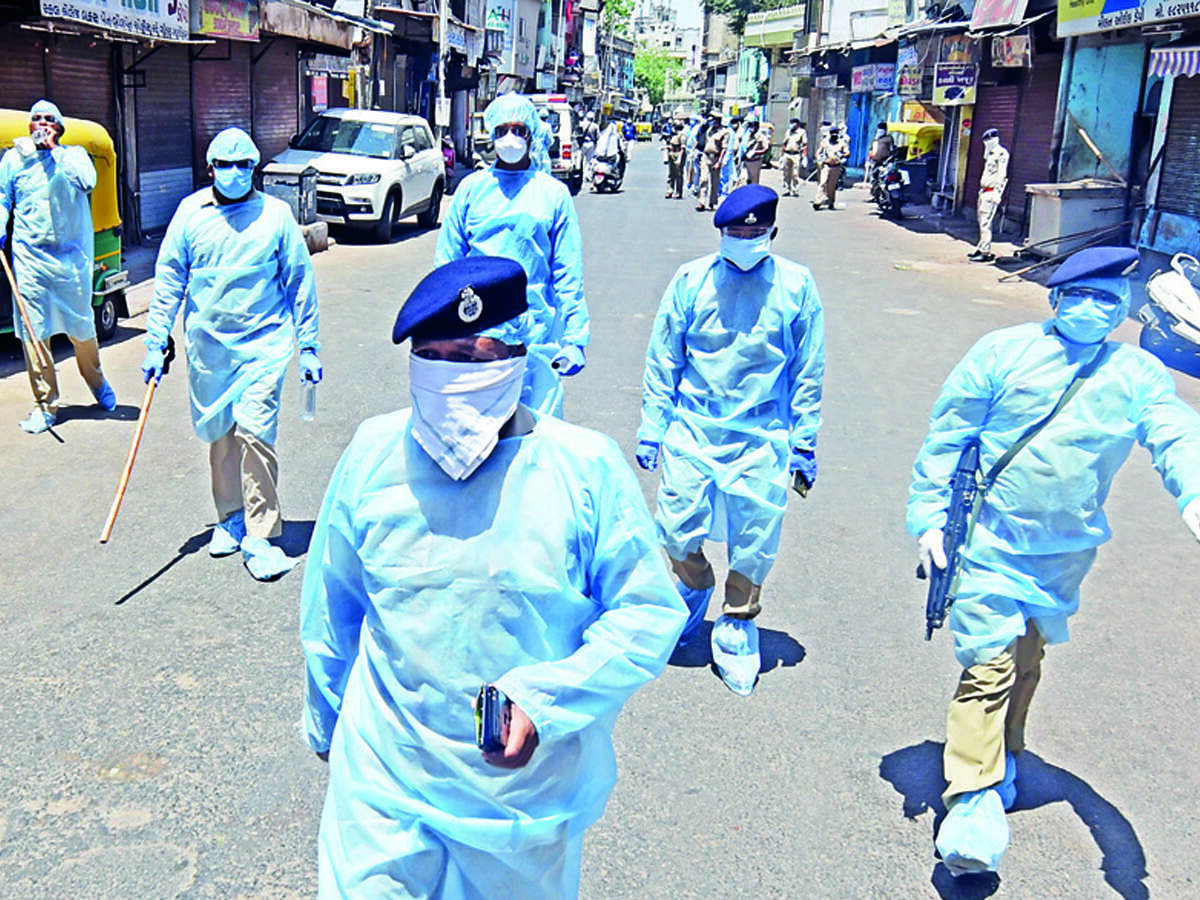 Ahmedabad’s old city covers only 5% of its area but is a cultural and commercial centre.
Ahmedabad’s old city covers only 5% of its area but is a cultural and commercial centre.
Trade body representatives say the textile business and the wholesale markets of the Walled City are reviving. The wait is now on for the foodie haunts in Manek Chowk and Bhathiyar Gully to reopen.
“Business is nowhere near the pre-Covid levels, but we’re getting back,” says Moin Lakdawala, owner of an electronics shop on the nearby Relief Road. He recalls evenings in April and May that were spent poring over lists of patients. “We wanted to know if there were cases around our homes. Thankfully, the case numbers are low now.”
The city’s central zone, which includes the Walled City, now accounts for only 17% of cases, down from the peak of 76%. Former hotspots like Danilimda, Khadia, Jamalpur, and Dariapur have been reporting fewer than 10 cases a week. Vipul Mehta, deputy municipal commissioner of the zone, confirms the decline in cases, adding that door-to-door surveys and intense testing led to the turnaround.
Gyasuddin Shaikh, MLA from Dariapur, says gaining the community’s trust has made a difference. “Now, people know the importance of preventing another Covid wave.”
“We are cautious now. We use sanitisers and wear masks,” says Dipali Soni, a resident of Jethabhai Ni Pol whose apartment complex was a micro-containment zone for a while. “We pray that we can celebrate Diwali with the usual fanfare this year.”
(This story is part of a series in association with Facebook. Facebook has no editorial role in this story.)
In April, all eyes were on the city’s west. The administration expected the virus to touch down there as people returned from abroad. While the first case was found there, the outbreak really started in the old Walled City. Jamalpur saw a surge. An 85-year-old woman who had returned from Saudi Arabia died of Covid at Panch Pipli in the Khamasa neighbourhood.

Jamalpur and the other old parts, such as Kalupur, Dariapur, Shahpur, Khadia and Karanj, comprise only 5% of Ahmedabad’s area and population but make up its cultural and commercial centre. They also have centuries-old wholesale markets. For these reasons, Unesco declared the area a World Heritage City in July 2017.
Read more from this series
By mid-April, three out of every four Covid cases were being reported from the Walled City and Danilimda. Imran Khedawala, MLA from Jamalpur-Khadia, was among the sick.
Alarmed, the government ordered a freeze. Only women were allowed out for two hours in the afternoon to shop for essentials.The crowded Bhadra Square — framed by the landmark Teen Darwaza — was emptied. Cops and medics took over.
Four months later, the old heart is beating again, albeit at a slower rate. Business is picking up around Teen Darwaza. The haggling is as fierce as ever but softened by masks. Shopkeepers have to bargain for physical distancing as well.

Trade body representatives say the textile business and the wholesale markets of the Walled City are reviving. The wait is now on for the foodie haunts in Manek Chowk and Bhathiyar Gully to reopen.
“Business is nowhere near the pre-Covid levels, but we’re getting back,” says Moin Lakdawala, owner of an electronics shop on the nearby Relief Road. He recalls evenings in April and May that were spent poring over lists of patients. “We wanted to know if there were cases around our homes. Thankfully, the case numbers are low now.”
The city’s central zone, which includes the Walled City, now accounts for only 17% of cases, down from the peak of 76%. Former hotspots like Danilimda, Khadia, Jamalpur, and Dariapur have been reporting fewer than 10 cases a week. Vipul Mehta, deputy municipal commissioner of the zone, confirms the decline in cases, adding that door-to-door surveys and intense testing led to the turnaround.
Gyasuddin Shaikh, MLA from Dariapur, says gaining the community’s trust has made a difference. “Now, people know the importance of preventing another Covid wave.”
“We are cautious now. We use sanitisers and wear masks,” says Dipali Soni, a resident of Jethabhai Ni Pol whose apartment complex was a micro-containment zone for a while. “We pray that we can celebrate Diwali with the usual fanfare this year.”
(This story is part of a series in association with Facebook. Facebook has no editorial role in this story.)
Download
The Times of India News App for Latest India News

Coronavirus outbreak
Trending Topics
LATEST VIDEOS
India
 Farooq Abdullah demands probe into exodus of Kashmiri Pandits
Farooq Abdullah demands probe into exodus of Kashmiri Pandits 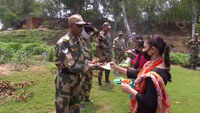 BSF soldiers celebrate Rakshabandhan with locals in Jammu
BSF soldiers celebrate Rakshabandhan with locals in Jammu 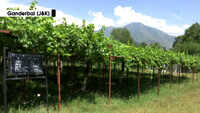 Development in infrastructure boosts grape cultivation in Kashmir
Development in infrastructure boosts grape cultivation in Kashmir 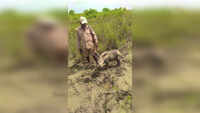 Watch: Newborn rhino rescued by Kaziranga National Park staff
Watch: Newborn rhino rescued by Kaziranga National Park staff 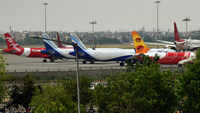 Covid-19: Fresh guidelines for international passengers out
Covid-19: Fresh guidelines for international passengers out  Centre asks states, UTs to allow hospitalised Covid patients use smartphones to interact with kin
Centre asks states, UTs to allow hospitalised Covid patients use smartphones to interact with kin
More from TOI
Navbharat Times
Featured Today in Travel
Quick Links
Coronavirus in MumbaiCoronavirus in KolkataCoronavirus in HyderabadCoronavirus in DelhiCoronavirus in BangaloreCoronavirus symptomsCoronavirus in IndiaWhat is CoronavirusCoronavirus NewsSolar EclipseNPRWhat is NRCCAB BillCAB and NRCRTI BillPodcast newsLok SabhaShiv SenaYSRCPCongressBJP newsUIDAIIndian ArmyISRO newsSupreme Court
Get the app



